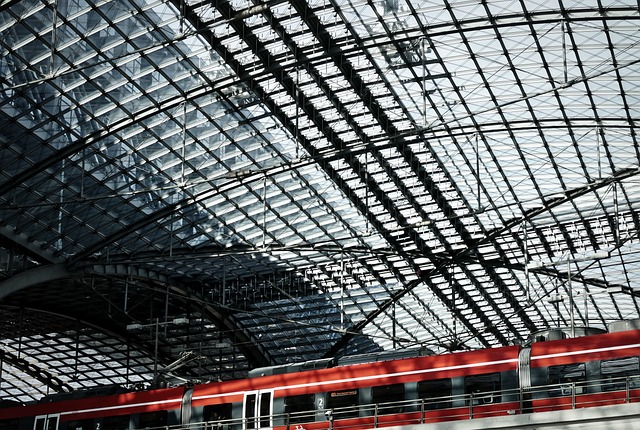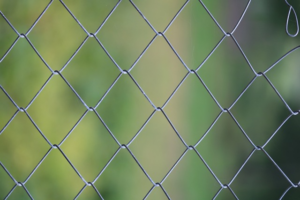Repairing Leaks: A Homeowner’s Guide to Austin Roof Flashing Fixes
Roof Repair Austin underscores the importance of prompt identification and repair of water infiltration issues on residential roofs, particularly in the face of Austin's diverse weather conditions. Homeowners should actively inspect their attics during dry spells for signs of moisture and cond…….

Roof Repair Austin underscores the importance of prompt identification and repair of water infiltration issues on residential roofs, particularly in the face of Austin's diverse weather conditions. Homeowners should actively inspect their attics during dry spells for signs of moisture and conduct post-rainfall exterior inspections to detect leaks or damaged flashing around potential entry points like chimneys, vents, and valleys. Flashing, often made of metal, can degrade over time due to exposure to Austin's high UV index, necessitating regular maintenance to prevent water from compromising the home's structure. Advanced methods like infrared scanning provided by Roof Repair Austin are key for detecting hidden leaks that could lead to bigger problems. Regular upkeep and professional repair services are essential to protect against the costly consequences of water intrusion. Utilizing materials like SBS modified bitumen or galvanized steel flashing, which adapt to temperature fluctuations and resist corrosion, is recommended for effective repairs. Homeowners in Austin should prioritize roof flashing maintenance as part of their routine home care to ensure a dry, secure living environment and save on future repair costs.
When confronted with water infiltration issues, addressing roof flashing is paramount to safeguarding your home’s structural integrity and maintaining its comfort. In the unique climatic conditions of Austin, where variable weather patterns can challenge even the most robust constructions, understanding and repairing roof flashing becomes a critical task for any property owner or manager. This comprehensive guide delves into the intricacies of assessing damage, selecting appropriate materials, and implementing effective repair strategies to protect your residence against water intrusion. From step-by-step instructions suitable for Austin’s climate to insights on choosing professional roof repair services in Austin, this article equips you with knowledge to tackle flashing repairs confidently. Whether you opt for a DIY approach or seek expert assistance, the goal is clear: to ensure your roof remains a watertight barrier against the elements.
- Assessing the Damage: Identifying Leaks and Flashing Issues in Your Roof Repair Austin Project
- Understanding Roof Flashing: The Essential Role in Waterproofing Your Home
- Materials for Effective Roof Flashing Repairs: What to Use in Roof Repair Austin
- Step-by-Step Guide to Repairing Roof Flashing in Austin Climate Conditions
Assessing the Damage: Identifying Leaks and Flashing Issues in Your Roof Repair Austin Project

When water infiltration issues arise on your roof, prompt assessment and identification of leaks and flashing problems are crucial for effective repair. In the context of Roof Repair Austin projects, homeowners and professionals alike must be vigilant in detecting signs of damage that could compromise the integrity of the structure. During dry weather, carefully inspect your roof from the attic, looking for stains or light beaming through, which can signal compromised flashing. After a rainfall, check the exterior for any obvious leaks or damaged flashing around chimneys, vents, and valleys—areas where water pressure is particularly intense. These are common entry points for water, and addressing them promptly can prevent more extensive damage.
Flashing, typically made of metal, serves as a barrier to direct water away from critical areas of the roof. Over time, this flashing can corrode or shift, leading to gaps where water can seep through. In Austin’s climate, with its variable weather patterns and high UV index, flashing maintenance is particularly important. Professional Roof Repair Austin services are adept at diagnosing these issues, utilizing advanced techniques such as infrared scanning to detect hidden leaks that could escalate into costly repairs if neglected. Engaging the expertise of local professionals, like those in Roof Repair Austin, ensures a thorough evaluation and effective repair solution tailored to your property’s specific needs.
Understanding Roof Flashing: The Essential Role in Waterproofing Your Home

When addressing water infiltration issues in your home, understanding the role of roof flashing is paramount for effective waterproofing. Roof repair specialists in Austin often encounter situations where leaks originate from compromised flashing, highlighting its critical function in safeguarding your residence from moisture damage. Flashing, typically composed of metal, is installed at critical junctures where the roof meets other building materials like chimneys, vents, and valleys. Its primary purpose is to create a watertight seal that redirects water flow away from these vulnerable points, preventing water from seeping into your home’s structure.
Professional roof repair services in Austin can assess and rectify issues with your roof flashing before they escalate into more significant and costly problems. A thorough inspection will identify any gaps, tears, or improper seals that could allow water intrusion. Homeowners should be proactive in maintaining their roof flashing, as this preventive measure can save considerable time, money, and stress by avoiding the consequences of interior water damage. Regular maintenance, combined with the expertise of local roofing professionals, ensures that your home’s flashing continues to perform its essential role in maintaining a dry, safe living environment.
Materials for Effective Roof Flashing Repairs: What to Use in Roof Repair Austin

When addressing water infiltration issues in Austin’s diverse climates, effective roof flashing repairs are paramount. Roof Repair Austin specialists often encounter a variety of challenges, from the scorching summer heat to the occasional hailstorms. To ensure the longevity and integrity of your roof, it is crucial to select appropriate materials for flashing repairs. Rubberized asphalt flashing, also known as SBS modified bitumen, is a popular choice due to its flexibility and durability under extreme temperatures. It adheres well to various surfaces and can withstand the expansion and contraction that occurs with thermal variations.
Another material gaining popularity in Roof Repair Austin for flashing repairs is high-quality aluminum or galvanized steel. These metals are corrosion-resistant, particularly when paired with appropriate coatings suitable for the Austin environment. Additionally, they can be formed into custom shapes and sizes to fit any roof configuration precisely. For a watertight seal, professionals may also utilize high-grade sealants and adhesives that are resistant to the UV rays prevalent in Austin’s sunny skies. These materials, when combined with skilled workmanship, provide a robust solution to prevent water infiltration, ensuring your home remains dry and protected against the elements. In Roof Repair Austin, using the right materials is essential for successful flashing repairs that can endure the test of time and weather.
Step-by-Step Guide to Repairing Roof Flashing in Austin Climate Conditions

When addressing water infiltration issues due to compromised roof flashing in the Austin climate, it’s crucial to approach the repair with precision and care. The unique conditions of Austin, with its hot summers and mild winters, can exacerbate damage to roof flashing if not addressed promptly. This step-by-step guide is tailored for homeowners or DIY enthusiasts in Austin who wish to undertake roof repair tasks themselves.
Begin by carefully inspecting the affected areas of your roof where the flashing meets other surfaces, such as chimneys, vents, and valleys. Look for any signs of rust, cracks, or lifting seals that could allow water to penetrate. In Austin’s humid climate, these issues can be expedited by the condensation and moisture present year-round. Use a flat pry bar to gently remove any damaged flashing without causing further harm to the roofing material. Clean the area thoroughly to ensure a solid bond for new flashing.
Next, cut replacement metal flashing to size, ensuring it extends slightly beyond the damaged area. In Austin, where high winds and hail are not uncommon, this extra length will provide additional protection against future impact damage. Apply a generous layer of roofing cement or a high-quality sealant along the edges where the new flashing will be placed. This step is critical to prevent leaks in the long run. Secure the flashing with roofing nails every 6 to 8 inches, being careful not to overdrive the nails and potentially penetrate through the underside of the roof sheathing.
Once the new flashing is in place, apply a silicone or rubberized roof sealant over the joints and nail heads for added weatherproofing. This extra step is especially important in Austin’s variable weather conditions, where sudden rainstorms can test the integrity of your roof repair. Finish by applying a layer of metal flashing tape over the entire length of the new flashing for additional protection against the elements.
Remember to adhere to all safety precautions while working at height, and consider hiring a professional if you feel uncomfortable or uncertain about performing these repairs yourself. For residents in Austin, maintaining and repairing roof flashing is not just about preventing leaks; it’s also about protecting your home from the specific challenges posed by this region’s climate.
roof repair Austin homeowners can safeguard their properties from water damage by addressing roof flashing issues promptly. This article has outlined the critical steps for assessing leaks, understanding the function of roof flashing, and selecting appropriate materials for repairs within the varied climate conditions of Austin. By following the provided guide, residents can effectively repair their roof flashing, thus averting potential water infiltration problems. It’s clear that proactive maintenance, guided by professional advice and informed by local climatic considerations, is key to ensuring a dry and secure home environment. For those in Austin facing similar challenges, the guidance offered here provides a solid foundation for preventing costly repairs down the line.







